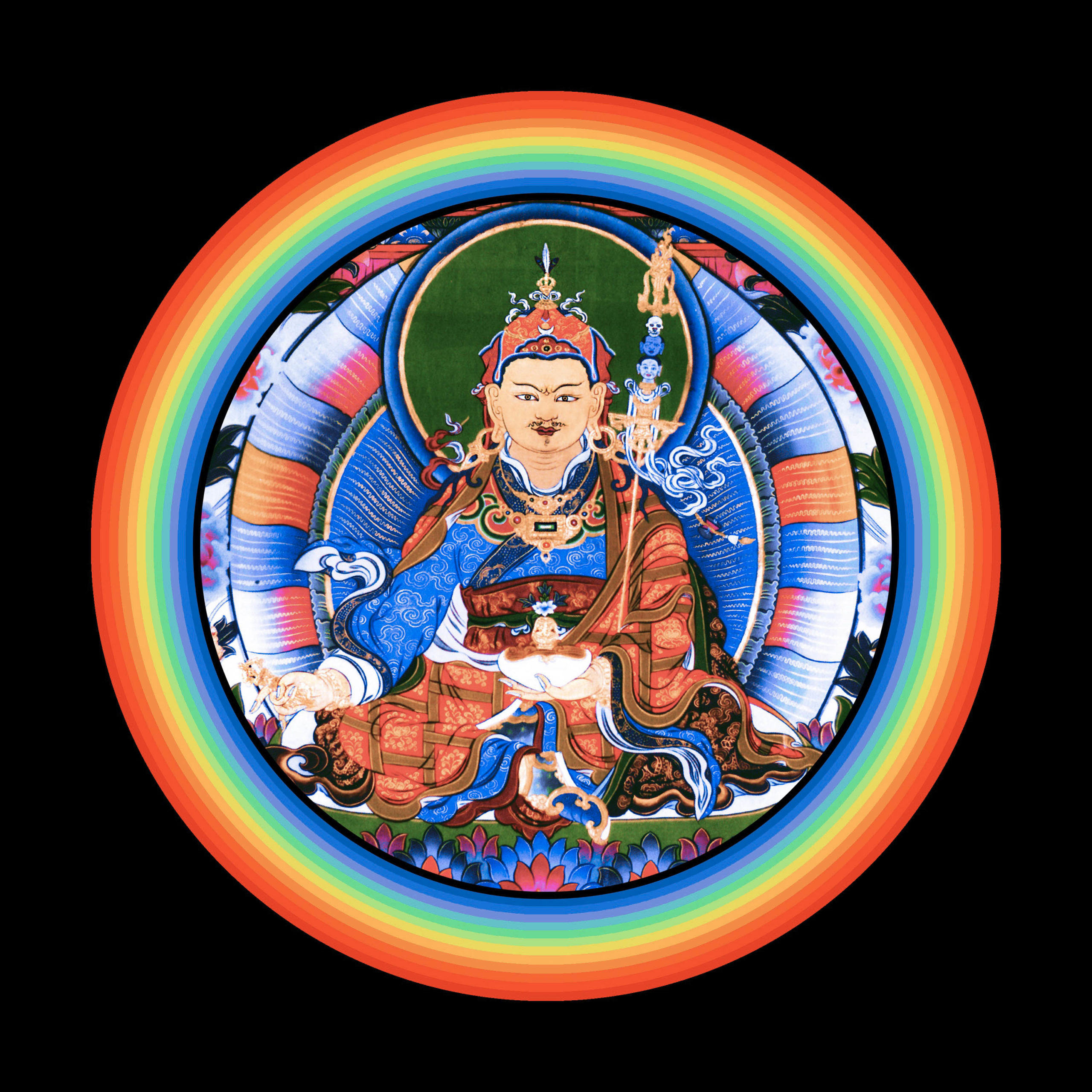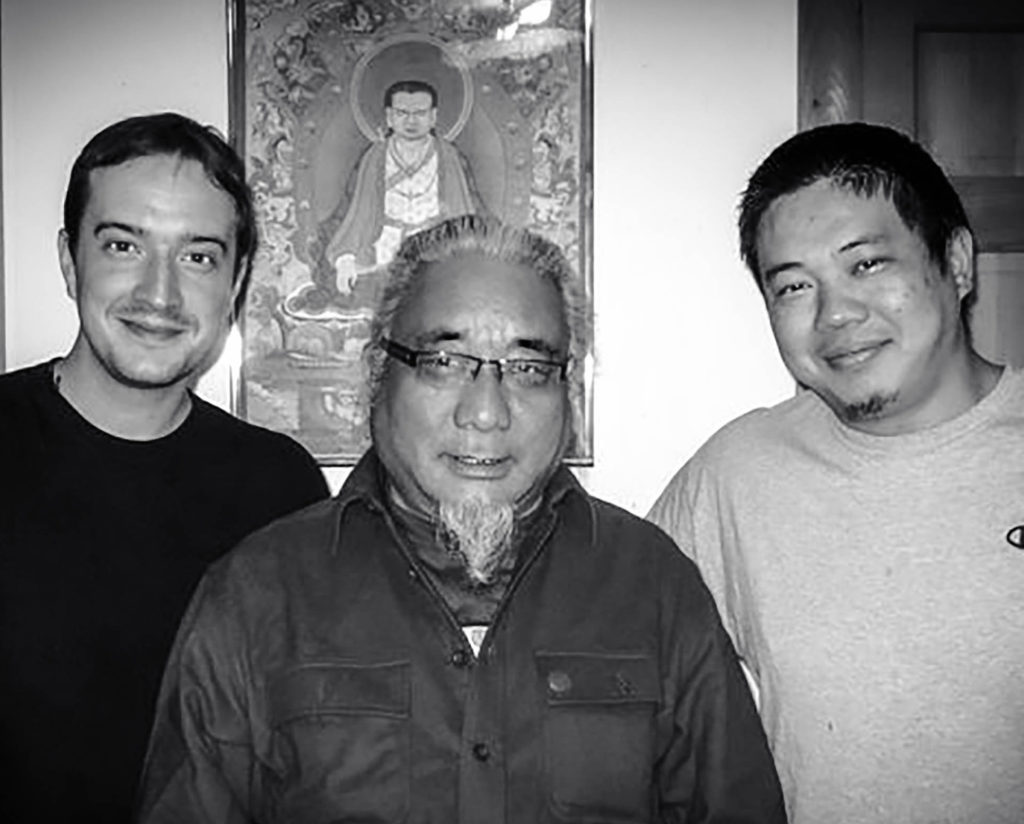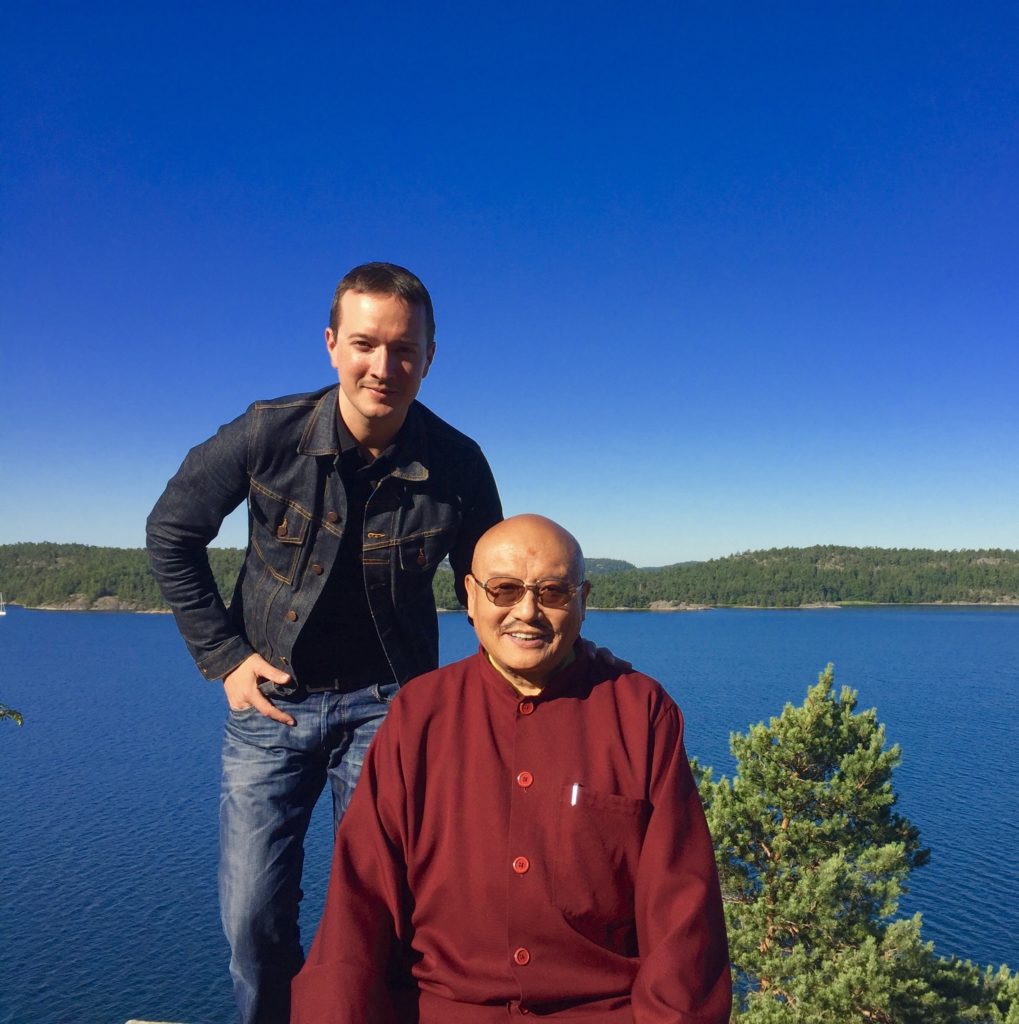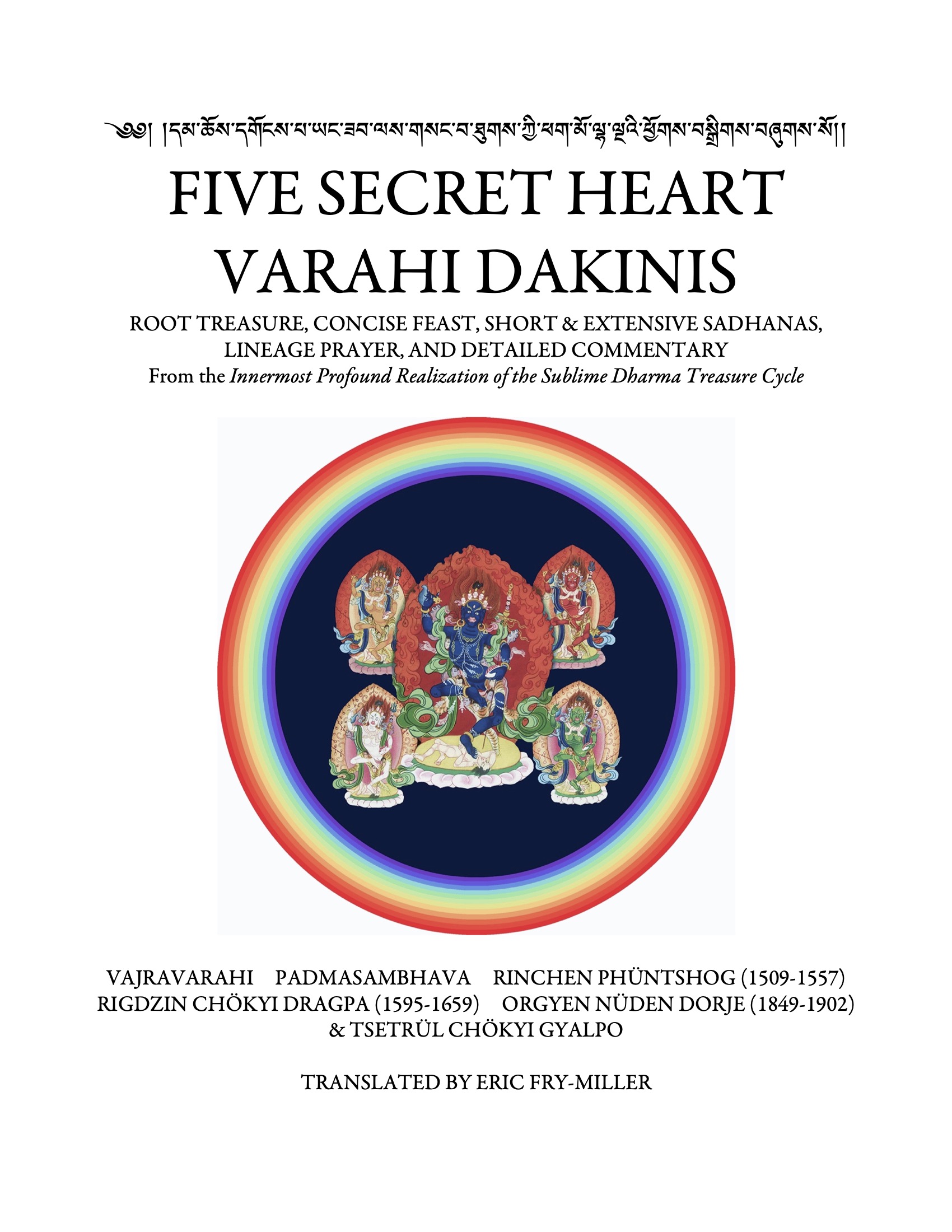Two of my dear dharma teachers, mentors, and friends have passed on beyond this life, demonstrating the special instruction of impermanence. Both Lho Ontul Rinpoche passing away quite recently and Lamchen Gyalpo Rinpoche passing in recent years have left me realizing that there isn’t time to waste in this precious life of fleeting opportunity. One of the many common threads that I shared with both these Lamas was helping to translate their empowerments and teachings on the Yangzab treasure cycle revealed in the 16th century by Rinchen Phüntshog (1509-1557). Without going into too much detail yet, the Yangzab treasure represented Rinchen Phüntshog’s very special revelation of an entire cycle of practices from the preliminaries to the highest teachings on dzogchen. These teachings were transmitted to Rinchen Phüntshog by the second Buddha of Oddiyana, the Lotus-Born Padmasambhava, through physical hidden treasure he discovered at Terdom, along with his own visions, past-life recollections, and dreams. Rinchen Phüntshog then wrote these teachings down as visionary memories and translations of decoded secret dakini symbols.
This treasure cycle is called the Damchö Gongpa Yangzab (Innermost Profound Realization of the Sublime Dharma), often called the Yangzab (Innermost Profound) or Gongpa Yangzab (Innermost Profound Realization) in short. The Innermost Profound Realization in this context is the realization of the enlightened mind of Padmasambhava. Throughout their lives Ontul Rinpoche and Gyalpo Rinpoche must have touched countless people in ways that I can’t even begin to fathom. One common thread was their relentless passion for sharing and inspiring others to practice the Yangzab treasure teachings and instructions. In my mind, they are clear emanations of Padmasambhava’s activities in this world, Yangzab Lamas, both through their countless activities, but also with their very presence. To honor them a little, I’d like to share translations from the Yangzab treasure cycle, translations that I worked on with both Öntül Rinpoche and Gyalpo Rinpoche in particular.
Yangzab Three Roots
Two decades ago, the first empowerment and teaching I received from Ontul Rinpoche was that of the Yangzab Three Roots. In this practice, we cultivate the awareness of ourselves as the Guru, yidam deity, and dakini simultaneously as one. The enlightened teachers, deities, dakinis do not live outside us, but directly within our own body, speech, and mind. By cultivating this awareness at all times while we are alive, we purify our attachment to the outer world and beings as being ordinary. Our life becomes the dance of the Guru, yidam, and dakini.
Ontul Rinpoche lived inside this dance. He was the walking, talking, laughing, smiling, joking three roots. Everywhere he went was part of this mandala. Maybe he looked like a cool Tibetan Lama on the outside, but on the inside, the luminous blood of the three roots flowed through him. The last thing we talked about were plans to have clear translations of all the main Yangzab practices and commentaries. Above all, he really wanted a special refined version of the Three Roots Practice to be widely available to the world, as he considered it to be part of the precious heart of the Yangzab treasure cycle. Well, I didn’t have a chance to share this translation with him, at least this time around. But maybe if he looks down from the Lotus Light Palace of the Glorious Copper-Colored Mountain from time to time, he might notice that I finished it finally, shaking his head, scowling, and then bursting into laughter as he often does.
Here are two versions of the three roots practice. One is the original Three Roots Practice written down by Rinchen Phüntshog himself. The other is a more concise Daily Practice of the Three Roots by Orgyen Nüden Dorje. By sharing these, I hope this helps in some way to continue Ontul Rinpoche’s and Gyalpo Rinpoche’s beautiful legacy of spreading the teachings and practice of the Yangzab treasures throughout the world.
Yangzab Three Roots Practice Root Treasure by Rinchen Phüntsog
Daily Practice of the Three Roots by Orgyen Nüden Dorje
Yangzab Five Secret Heart Dakinis
I was also fortunate to have the opportunity to study with and translate for both Ontul Rinpoche and Gyalpo Rinpoche when they taught the Yangzab dakini practice on multiple occasions. The living vibrant secret heart dakini practice in the Yangzab tradition is quite special, including how it contains the practices of the dakini from the perspectives of maha, anu, and ati yoga as taught to Padmasambhava by Vajravarahi herself. The mahayoga style dakini practice is an essential generation stage practice wherein we cultivate the realization of our body, speech, and mind as being the Five Secret Heart Varahi Dakinis. The anuyoga style then introduces the practices of working with the subtle channels, energies, and essences of the body. Elaborately, there are the six dharmas of: inner fire tummo, luminosity of deep sleep, practice of dreams, illusory body, phowa, and the bardo that are connected to the completion stage of this dakini practice. The atiyoga style introduces the dakini as the primordially pure nature of the mind through the practice of cutting through conceptual thoughts (tregchö) and the mind’s spontaneous presence through the practice of directly crossing (tögal) into the visions of the three kayas. At some point, I’d like to share a bit more of some of the deeper discussions I’ve had with these Lamas as well as others on these particular dakini practices. There’s a lot of subtle things going on with this dakini practice.
For now, presented here is the pithy Five Secret Heart Varahi Dakinis Root Treasure text revealed by Rinchen Phüntshog. There is also the Five Secret Heart Varahi Dakinis Ganachakra Feast practice by Rigdzin Chökyi Dragpa. Then, there is the Profound Secret Piece of the Heart: Five Secret Heart Varahi Dakinis Unelaborate Daily Practice by Orgyen Nüden Dorje. This last text was coincidently requested by Orgyen Nüden Dorje’s older brother, Künzang Drodül Tsal, who is considered one of the previous incarnations of Ontul Rinpoche.
Five Secret Heart Varahi Dakinis Root Treasure revealed by Rinchen Phüntshog
Five Secret Heart Varahi Dakinis Ganachakra Feast by Rigdzin Chökyi Dragpa
Profound Secret Piece of the Heart: Unelaborate Daily Practice by Orgyen Nüden Dorje
For those that wish to be able to study and learn about this secret heart dakini tradition in a deeper way, there are two unique publications available in the bookstore with extensive pith instructions and commentaries on the Innermost Profound Dakini:
Five Secret Heart Varahi Dakinis
Most Profound Six Dharmas (The Completion Stage Practices of the Five Varahi Dakinis)
Yangzab Dzogchen
While dzogchen outwardly is a type of meditation practice, a way of looking at the mind, on a deeper level, it’s something that can become completely embodied by a person too. It becomes a way of how not only to philosophically look at the world, but also how we precisely gaze out of our very own physical eyes, how we breathe, how we relate to our own inner emotions, and the goals we set for ourselves in this life and beyond. Lamchen Gyalpo Rinpoche lived in sky-like world of the vajrayana and dzogchen. While I’m not sure how many people (like myself) really knew the depth of his understanding of the dharma and practice, the signs of his mastery were there every single time he taught. His mind grasped the nuances of the ancient living traditions of both scholarly vajrayana commentaries as well as the subtle instructions for yogis and yoginis in the deepest depths of retreat. He was in every way a precious (Rinpoche) dharma king (Gyalpo) that who understood the path (Lamkhyen) on a very profound level that might be impossible for those of us with small minds to comprehend.
Fortunately, Gyalpo Rinpoche left an incredible legacy of written teachings and commentaries. The last couple times I saw him, I was translating for his teachings on the Yangzab Completion Stage of the Three Roots Taking the Five Poisons onto the Path amongst other topics. During these times, I had the opportunity to clarify many questions on the Yangzab treasure cycle in general as well as its relationship to other treasures collections, especially the Nyingthig Yabzhi. Gyalpo Rinpoche himself was a dedicated student of the Nyingthig (Heart Essence) dzogchen traditions that he studied with his root teacher Khunu Rinpoche as well as many others. In my opinion, one of the most incredible things Gyalpo Rinpoche wrote was a commentary called the Sphere of the Blazing Five-colored Light of Primordial Wisdom: A Concise Commentary on the Completion Stage of the Three Roots Taking the Five Poisons onto the Path. During my oral translations for him, he went through this entire commentary multiple times in perfect detail and gave me permission to translate it. It weaves a thorough explanation of the core dzogchen practice of cutting through (tregchö) together with the heart teachings of the Nyingthig tradition like Garab Dorje’s Three Statements that Strike the Vital Points and ornaments that with pith instructions from other previous masters. While I never got the chance to present a finished translation of this to him while he was still alive, I did finally finish it, hopefully doing it some justice. Even through death, Gyalpo Rinpoche’s legacy is alive as an incredible Yangzab Lama. By sharing these, I hope that the legacies of Ontul Rinpoche, Gyalpo Rinpoche, and the rest of the Yangzab Lamas, continue to grow and flourish throughout life, death, and beyond.
Completion Stage of the Three Roots Taking the Five Poisons onto the Path Root Treasure
Sphere of the Blazing Five-colored Light of Primordial Wisdom by Gyalpo Rinpoche
For those that wish to study this dzogchen tradition in a deeper way, there is a new special translation collection in the bookstore:
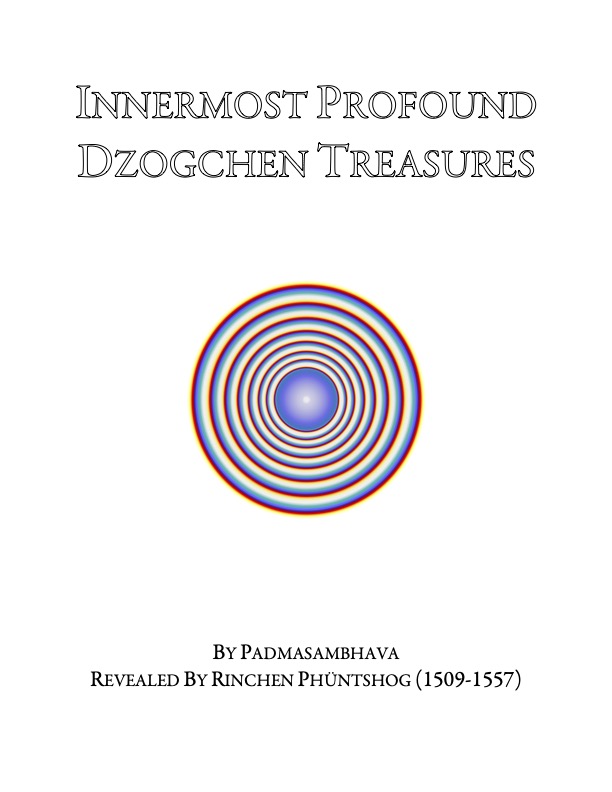
Innermost Profound Dzogchen Treasures
There’s a lot to share soon about this Yangzab tradition as well as many other interesting translations on dzogchen, mahamudra, the Six Dharmas of Naropa, other visionary vajrayana traditions, and more. If you enjoy these translations and find them meaningful, please consider making a donation to support this work or purchasing titles from the bookstore, which now notably has instantly available Ebooks for all the titles. Stay tuned for more translation packed posts and announcements shortly. Tashi shog

